Single Phase Pump Motor Installation Wiring:
This diagram shows how to make Single Phase Pump Motor Installation Wiring. In this circuit, we use a DP MCB (Double Pole Minature Circuit Breaker ), an RCCB ( Residual Current Circuit Breaker ), an 8-pin relay, a magnetic contactor, a flowmeter, and an AC solenoid. First, we need to connect the DP MCB with the power source, then connect the relay and contactor with the circuit breaker, then connect the flowmeter and solenoid with the circuit.
Advertisements
Components needed For this Project:
You can get the components from any of the sites below:
- DP MCB 20A [See Buy Click Amazon]
- DP RCCB 16A [See Buy Click Amazon]
- 8 Pin Relay (220V AC) [See Buy Click Amazon]
- Magnetic Contactor 25A [See Buy Click Amazon]
- Flow Meter [See Buy Click Amazon]
- AC Solenoid [See Buy Click Amazon]
*Please note: These are affiliate links. I may make a commission if you buy the components through these links. I would appreciate your support in this way!
Advertisements
Components used to make the Single Phase Pump Motor Installation Wiring:
DP MCB In 2 Pole MCB, switching & protection is affected in phases and the neutral. A Double Pole or DP Switch is a Switch that Controls 2 Circuits at the same time. In terms of Residential Switching, this Normally means it Switches the live and Neutral at the same time. In Layperson Terms, Double Pole switches or DP Switches are Exclusively Designed to Control 2 Different Electrical Circuits at the same time, which allows the Appliances to Isolate safely and reliably. Fan or light Combinations and Medical Equipment are some of the many applications for DP Electrical Switches and Electrical components.
02. RCCB:
The Residual Current Circuit breaker RCCB is the Safest device to detect and Trip against Electrical Leakage current. This ensures protection against Electric shock Caused by indirect contact. Circuit breakers (CB) are automatically Operated Electrical Switches that Protect Electrical Circuits from Short-Circuiting or Overloading systems. It Protects against many major accidents. RCCB Circuit Breaker is an Electrical Wiring device whose function is to disconnect the current in the circuit.
The most popular relay for automation work is the 8 Pin Relay. The 8-pin relay has a DC or AC coil as the main part. which is connected to two pins. There are two common parts. Underneath a Common part are a NO and an NC part. No part is normally open with a common part and the NC part is normally closed. The timer base used for automation is the same as the 8-relay base. That is, switching can be done using the timer base. This is basically how a relay switch works for the relay.
04. Magnetic Contactor:
A magnetic contactor is an electromagnetic switching device. It is generally used for controlling 3-phase Motors. The operation of a magnetic contactor is similar to that of a Relay. but a relay is used for low-power or low-voltage connections, and a magnetic contactor is used for high-power or high-voltage connections. As soon as the supply is applied to the magnetic contactor coil. its normally open contacts are closed and normally closed contacts are opened and the associated devices are also operated. This is how a magnetic contactor works.
Water flow meters are devices used to measure the volume or mass of fluid that passes through a pipe for water. They are commonly used in water flow treatment and distribution systems, irrigation, and industrial processes. There are several types of water flow meters set, including positive displacement meters, turbine meters, ultrasonic meters, and magnetic meters. A water flow meter measures the total volume of fluid that has passed through a pipe over a certain time. A water flow sensor, on the other hand, measures the velocity of the fluid flow at a specific point in time. It is mainly used to monitor the flow rate in real-time, to detect any changes or irregularities in the water flow, and to regulate or control the flow as needed.
06. AC Solenoid:
The most fundamental, yet important benefit of the process water control valves is that they are easy to install. This helps save considerably on time & effort. Automatically Operated: This is another important benefit. These valves can be operated automatically. we have been able to offer a wide array of AC Solenoid valves. The valve is manufactured using quality-assured raw materials and advanced production techniques. This AC Solenoid Valve is also available in different specifications and can be customized as per the precise requirements of our clients. Clients can avail of this AC solenoid valve at affordable prices.
Thank You for visiting the website. Keep visiting for more Updates.
Frequently asked questions
Single-phase power is a 2-wire alternating current (AC) power supply circuit. Typically, there is one power supply wire—the phase wire—and one neutral wire, with current flowing between the power supply wire (through the load) and the neutral wire.
U and V are the 2 sides of a switch, so EITHER could be the "load". U and V will just "switch" whatever you connect to them, whether it is a pump or a relay.
In most of the world, 2 wires suffice for 220 volts single phase (not counting any additional earth protective grounds). In the US, the 240 volts are tapped at the transformer, so you end up with 3 wires- the neutral (center tap) and 2 hot wires of 120 volts each to neutral, and 240 volts hot to hot.
In North America, the small ones (1/3-hp, 1/2-hp, 3/4-hp) are usually 120-volts AC. Larger ones are 240-volts AC. Much larger ones (over 5 to 10 hp) are three-phase (240, 277, 460, etc). Most everywhere else, all pumps (like all electric motors) are 240-volts AC until they get over about 10 kW and then they'll be three-phase.
The protective ground was green or green with a yellow stripe. The neutral was white, the hot (live or active) single-phase wires were black, and red in the case of a second active. Three-phase lines are red, black, and blue.
Read more Single Phase Wiring
What is a kilowatt-hour (kWh) | kwh formula | What does kwh mean
Introduction to Electrical Units and CircuitskW and kWh on your electricity bill As your home uses electricity during...
What is the Difference Between kVA | What does KVA mean | kVA formula
Difference Between KVA ExplainedWhat does KVA Mean? There are technical terms aplenty when it comes to generators, and...
Power Factor | Power Unit | Energy | Electricity Unit
Power factor definition | Calculating Power FactorPower Factor Values In a purely resistive circuit, the power factor...


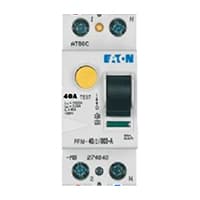
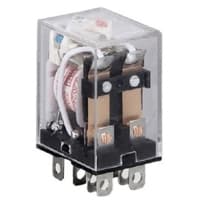
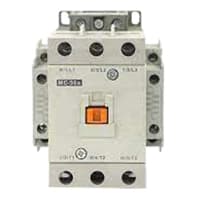
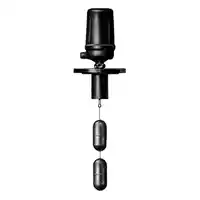
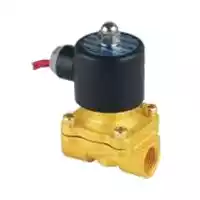
0 Comments